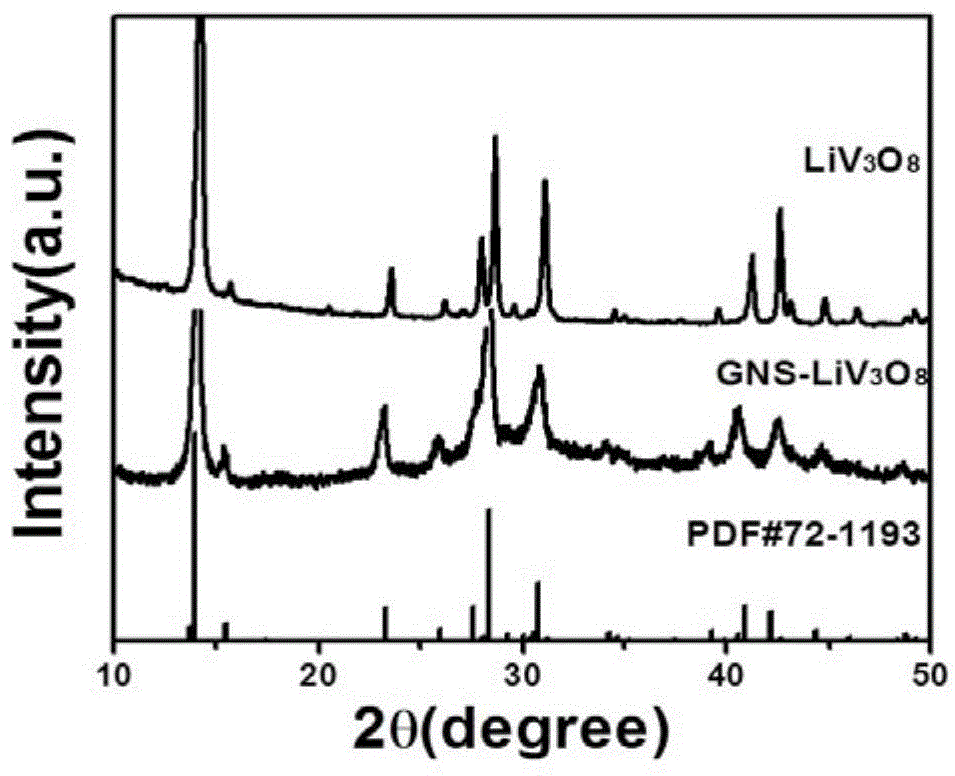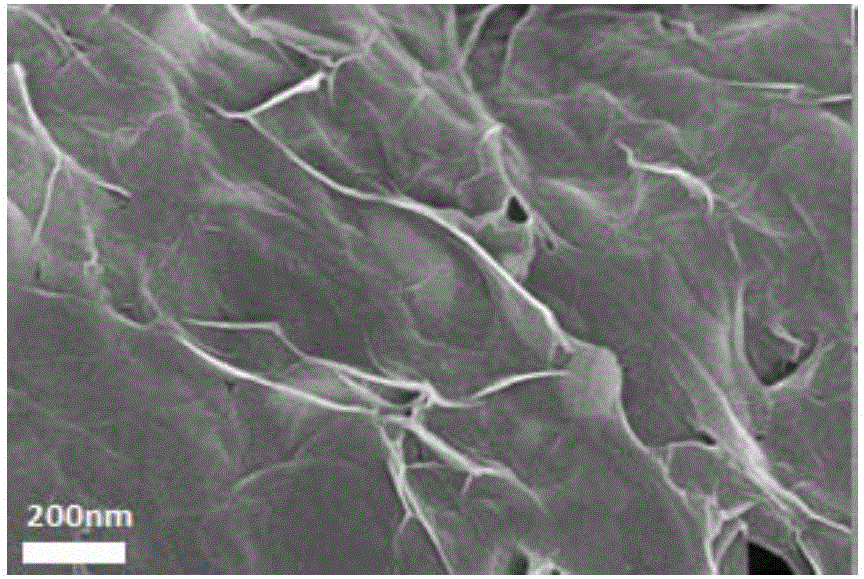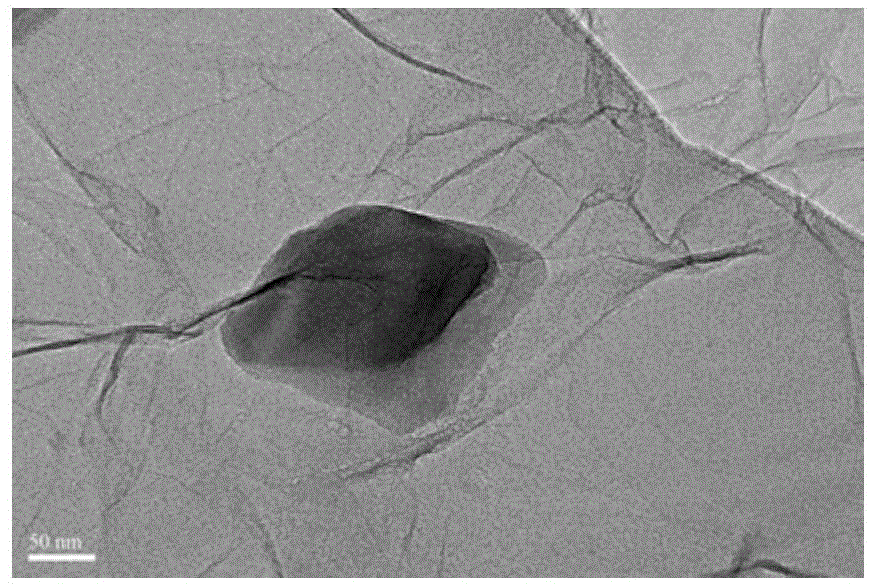Positive pole material of lithium ion battery and preparation method of positive pole material
A lithium-ion battery and cathode material technology, applied in battery electrodes, circuits, electrical components, etc., can solve problems such as electrochemical performance that needs to be improved qualitatively
- Summary
- Abstract
- Description
- Claims
- Application Information
AI Technical Summary
Problems solved by technology
Method used
Image
Examples
Embodiment 1
[0030] Step 1: Add 2.28g of oxalic acid to 70mL of aqueous solution dispersed with 2.55g of ammonium metavanadate, stir until the solution is brownish yellow, transfer the brownish yellow solution to a 100mL autoclave, place it in an oven, 180 °C for 12 hours, and after suction filtration, the sample was dried in an oven at 80 °C for 12 hours, and the precursor (NH 4 ) 5 V 2 o 5 . 1g of precursor ((NH 4 )5 V 2 o 5 Dissolve in 300mL aqueous solution, add 0.17g lithium hydroxide monohydrate to the solution, then add 0.2g polyethylene glycol 4000 as a dispersant, stir at room temperature for 2 hours, then heat in an oil bath at 80°C until the solvent evaporates to dryness. The obtained samples were calcined at 450 °C in an air atmosphere for 8 h to obtain crystallized LiV 3 o 8 Nanosheets.
[0031] The second step, weigh 0.5g LiV 3 o 8 , dissolved in 50mL of toluene solution, sonicated for 30min at 300w power, LiV 3 o 8 The dispersion of the nanosheets is better, and...
Embodiment 2
[0033] Step 1: Add 2.28g of oxalic acid to 70mL of aqueous solution dispersed with 2.55g of ammonium metavanadate, stir until the solution is brownish yellow, transfer the brownish yellow solution to a 100mL autoclave, place it in an oven, 180 °C for 12 hours, and after suction filtration, the sample was dried in an oven at 80 °C for 12 hours, and the precursor (NH 4 ) 5 V 2 o 5 . 1g of precursor (NH 4 ) 5 V 2 o 5 Dissolve in 300mL aqueous solution, add 0.17g lithium hydroxide monohydrate to the solution, then add 0.2g polyvinylpyrrolidone as a dispersant, stir at room temperature for 2 hours, then heat in an oil bath at 80°C until the solvent evaporates to dryness. The obtained samples were calcined at 450 °C in an air atmosphere for 8 h to obtain crystallized LiV 3 o 8 Nanosheets.
[0034] The second step, weigh 0.5g LiV 3 o 8 , dissolved in 50mL of toluene solution, sonicated for 30min at 300w power, LiV 3 o 8 The dispersion of the nanosheets is better, and th...
Embodiment 3
[0036] Step 1: Add 2.28g of oxalic acid to 70mL of aqueous solution dispersed with 2.55g of ammonium metavanadate, stir until the solution is brownish yellow, transfer the brownish yellow solution to a 100mL autoclave, place it in an oven, 180 °C for 12 hours, and after suction filtration, the sample was dried in an oven at 80 °C for 12 hours, and the precursor (NH 4 ) 5 V 2 o 5 . 1g of precursor (NH 4 ) 5 V 2 o 5 Dissolve in 300mL aqueous solution, add 0.17g lithium hydroxide monohydrate to the solution, then add 0.2g polyethylene glycol 4000 as a dispersant, stir at room temperature for 2 hours, then heat in an oil bath at 80°C until the solvent evaporates to dryness. The obtained samples were calcined at 450 °C in an air atmosphere for 8 h to obtain crystallized LiV 3 o 8 Nanosheets.
[0037] The second step, weigh 0.5g LiV 3 o 8 , dissolved in 50mL of toluene solution, sonicated for 30min at 300w power, LiV 3 o 8 The dispersion of the nanosheets is better, an...
PUM
 Login to View More
Login to View More Abstract
Description
Claims
Application Information
 Login to View More
Login to View More - R&D
- Intellectual Property
- Life Sciences
- Materials
- Tech Scout
- Unparalleled Data Quality
- Higher Quality Content
- 60% Fewer Hallucinations
Browse by: Latest US Patents, China's latest patents, Technical Efficacy Thesaurus, Application Domain, Technology Topic, Popular Technical Reports.
© 2025 PatSnap. All rights reserved.Legal|Privacy policy|Modern Slavery Act Transparency Statement|Sitemap|About US| Contact US: help@patsnap.com



